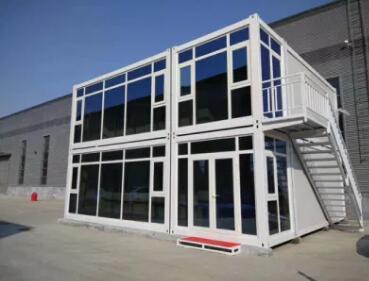Unveiling the Backbone: Understanding Material Strength and Its Crucial Role in Structural Applications
2024-01-30
Introduction:
The strength of materials forms the backbone of structural engineering, dictating the performance and reliability of various constructions. This blog aims to demystify the concept of material strength, exploring its definition and underscoring its indispensable role in shaping the integrity and safety of structures.
Defining Material Strength:
1. Tensile Strength:
- Definition: Tensile strength measures a material's ability to resist a pulling force without breaking.
- Testing: Determined by applying tension until the material fractures.
- Example: Cables, ropes, and structural elements like beams.
2. Compressive Strength:
- Definition: Compressive strength gauges a material's resistance to crushing or squeezing forces.
- Testing: Involves applying compressive stress until failure occurs.
- Example: Columns, pillars, and building foundations.
3. Shear Strength:
- Definition: Shear strength reflects a material's resistance to forces causing layers to slide.
- Testing: Involves applying parallel forces in opposite directions.
- Example: Bolts, rivets, and structural connections.
Why Material Strength Matters in Structural Applications:
1. Safety and Reliability:
- Ensures structures can withstand forces and loads without failure.
- Prevents catastrophic consequences and ensures occupant safety.
2. Structural Integrity:
- Directly influences the overall stability and robustness of buildings and bridges.
- Determines the ability of structures to endure various environmental and operational conditions.
3. Durability and Longevity:
- Strong materials contribute to the longevity of structures.
- Resists wear, fatigue, and environmental factors, ensuring extended functionality.
4. Efficient Material Use:
- Facilitates optimal material usage in design.
- Enhances cost-effectiveness and promotes sustainability by minimizing resource consumption.
5. Weight Considerations:
- High strength-to-weight ratio is crucial in weight-sensitive applications.
- Critical in aerospace, automotive, and other industries where minimizing weight is essential.
The Engineering Consideration:
1. Material Selection:
- Engineers carefully choose materials based on strength characteristics.
- Considers the specific needs of the structure, ensuring compatibility with anticipated forces and loads.
2. Optimizing Design:
- Strength influences the design process, dictating the size and shape of structural elements.
- Engineers strive to balance strength requirements with efficiency.
3. Testing and Quality Control:
- Rigorous testing procedures assess material strength.
- Quality control measures ensure consistency and reliability in manufactured materials.
Conclusion:
In conclusion, the strength of materials serves as a fundamental pillar in the world of structural engineering. Tensile, compressive, and shear strengths collectively determine a material's ability to withstand various forces, influencing the safety, durability, and efficiency of structures. The meticulous consideration of material strength by engineers ensures that structures not only stand resilient against external challenges but also contribute to sustainable and cost-effective solutions in the ever-evolving field of construction.



